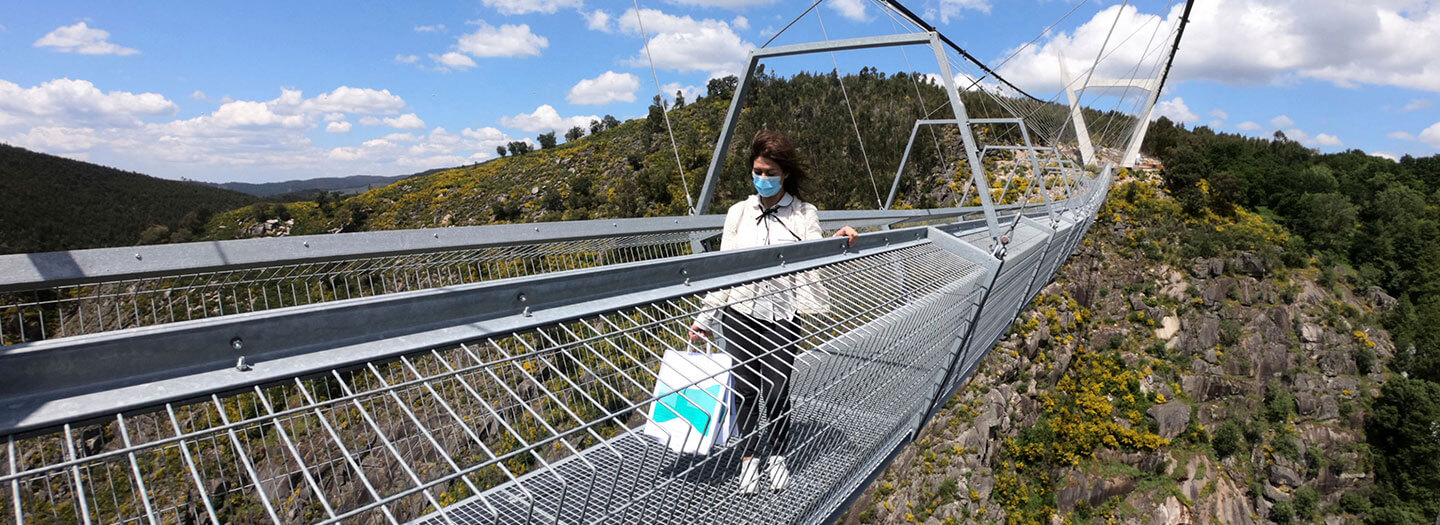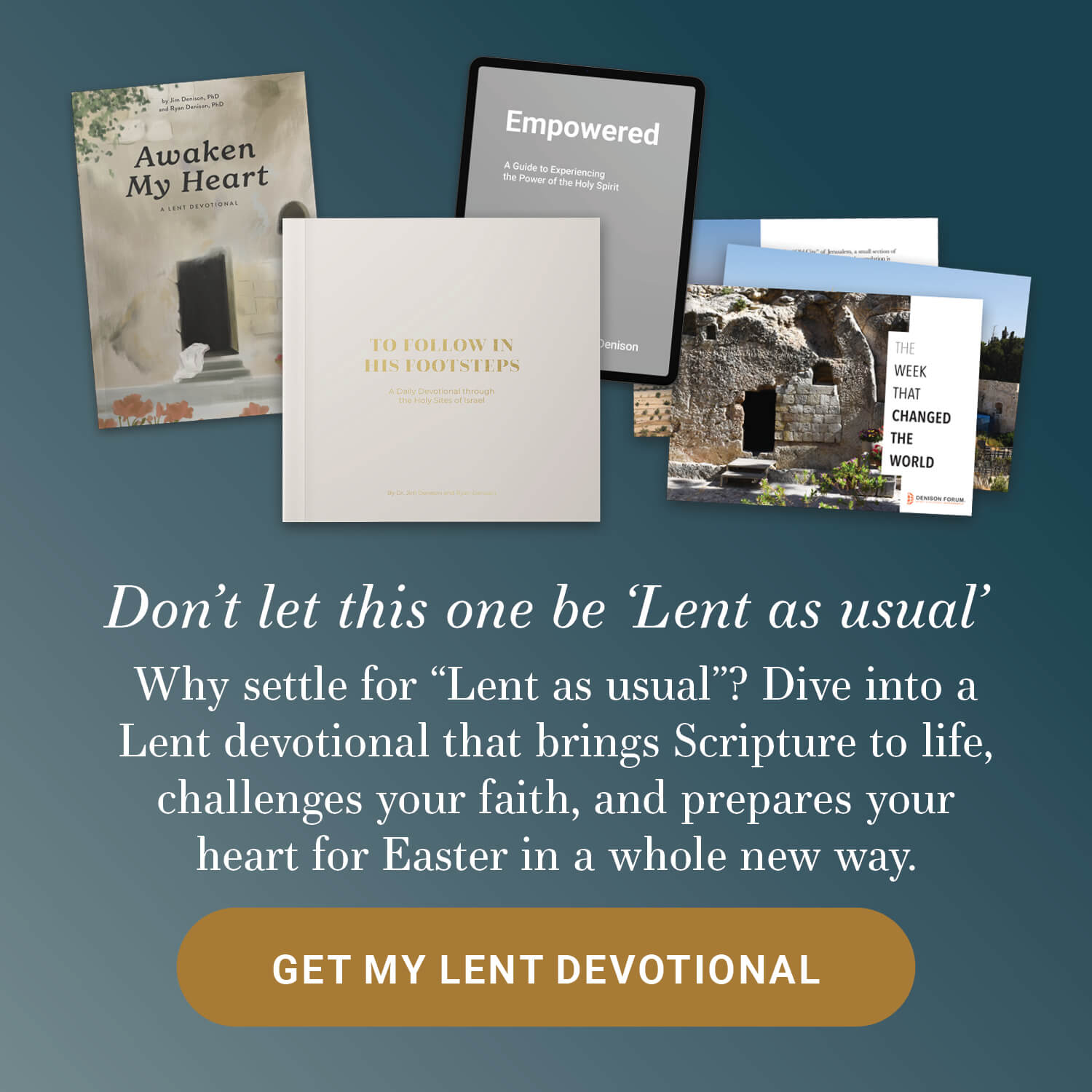
A woman walks across a narrow footbridge suspended across a river canyon, which claims to be the world's longest pedestrian bridge, in Arouca, northern Portugal, Sunday, May 2, 2021. (AP Photo/Sergio Azenha)
A beautiful, peaceful setting in Portugal holds the very antithesis of tranquility: the longest pedestrian suspension bridge in the world.
While swaying with every step, one can look out over the beautiful scenery or look down at the fast-moving River Paiva through the girded clear pathway, all while suspended in the air more than a mile from terra firma. Or sanity.
The headline for one article about the bridge described it as “high anxiety.”
“It is a breath of fresh air for our land because it will attract more investment, more people,” one tour guide noted. The first local resident who walked across the bridge described it as an “adrenaline rush.”
The bridge spans 1,693 feet between rock-strewn mountains and took two years to build. It opened to local residents last week and to the general public this week.
In a world of ever-growing phobias that show we have a problem with fear, more and more things are being created to scare us. Perhaps it’s the adrenaline rush that draws people to swaying high in the air over a raging river, or moving at warp speed on death-defying roller-coasters, or bungee-jumping off high platforms.
I gave up adrenaline rushes decades ago.
What do you fear?
How we experience fear has a lot to do with the context of what’s scaring us, according to a study mentioned in a Smithsonian Magazine article. If we perceive ourselves as being in a safe space, we go from fear to enjoyment or excitement—or an adrenaline rush. A haunted house at Halloween brings anticipated frights, but an encounter with an unknown assailant brings on fear.
Whatever the context, the body follows the brain’s reaction. Anytime I am on an airplane and we hit turbulence, I look at the flight attendants’ eyes to gauge their reaction. If they show fear, I know we are in trouble. If they are calm, I know I can relax my grip on the armrest.
We often learn fear through experience and from spoken or written words. If a sign warns that a bridge is out, we usually stop and turn around. If a sign says a dog is dangerous, we usually don’t try to pet it. If we see a person attacked by a dog, we know that dog is vicious.
The common factor in dealing with anxiety, fear, excitement, or whatever the context elicits, is our sense of control. “When we are able to recognize what is and isn’t a real threat, [to] relabel an experience . . . we feel in control. That perception of control is vital to how we experience and respond to fear,” according to the Smithsonian article.
Who’s in control?
I have heard it said that there are 365 “fear nots” in the Bible, one for each day of the year. Whether or not that is true, God has given us the written instruction for reframing fear or anxiety: remember who is in control.
The prophet Isaiah described the Creator who is in control: “Who has measured the waters in the hollow of his hand and marked off the heavens with a span, enclosed the dust of the earth in a measure and weighed the mountains in scales and the hills in a balance? Who has measured the Spirit of the Lord, or what man shows him his counsel? . . . Lift up your eyes on high and see: who created these? He who brings out their host by number, calling them all by name; by the greatness of his might and because he is strong in power, not one is missing” (Isaiah 40:12–13, 26).
I recently came across a quote by Elisabeth Elliot that I have copied and keep handy: “Fear arises when we imagine that everything depends on us.”
Everything does not depend on us. And it never will.
King Jehoshaphat recognized God’s power when facing a seemingly unsurmountable army, “O Lord, God of our fathers, are you not God in heaven? You rule over all the kingdoms of the nations. In your hand are power and might, so that none is able to withstand you” (2 Chronicles 20:6).
Then he yielded control to him: “We are powerless against this great horde that is coming against us. We do not know what to do, but our eyes are on you” (v. 12).
And God answered: “Do not be afraid and do not be dismayed at this great horde, for the battle is not yours but God’s” (v. 15).
When we recognize God’s control, our response to the fears we confront daily will be contextualized. If we remember God’s faithfulness in the past and his promises for the future, we can relabel our fears. We can look into the eyes of Jesus and experience tranquility in the midst of a swaying walk over raging rivers.
God’s message is still the same today for all believers: “Fear not, for I have redeemed you; I have called you by name, you are mine. When you pass through the waters, I will be with you; and through the rivers, they shall not overwhelm you; when you walk through fire you shall not be burned, and the flame shall not consume you” (Isaiah 43:1–2).
The next time you face a swaying bridge, remember Who’s holding the cables.












